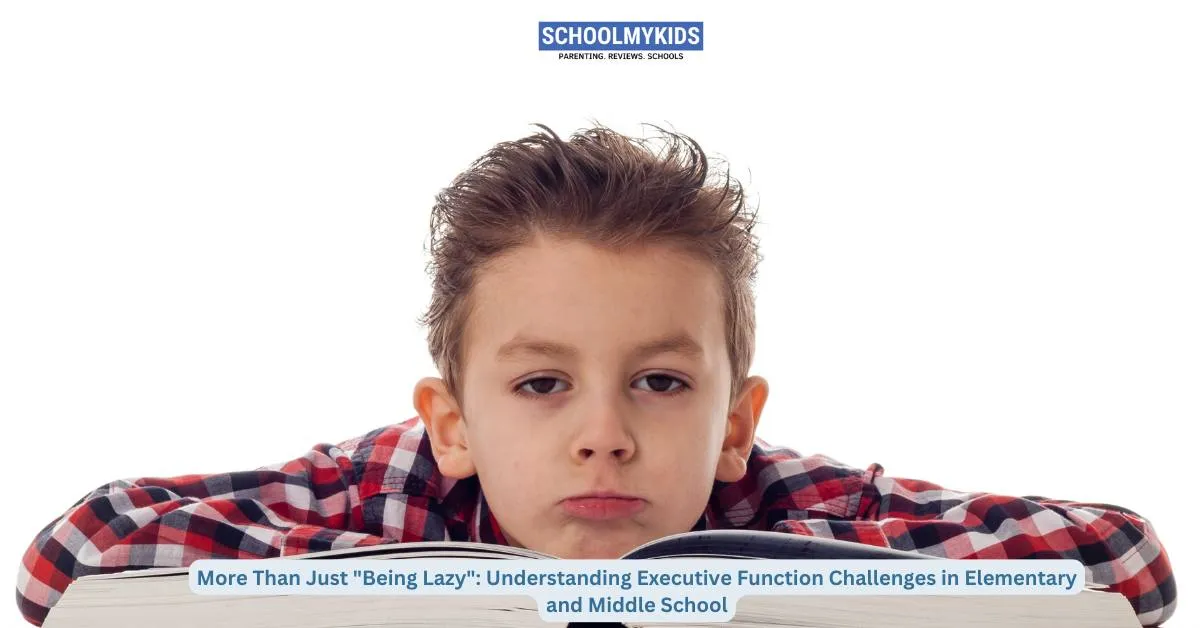Introduction
“Why can’t you just sit down and finish your homework?” “You had all week—why leave it for the last minute?” “You’re so smart, but you’re just being lazy.”
These are common frustrations voiced by teachers and parents. But what if the issue isn’t laziness at all? What if the child genuinely struggles to start, organize, or complete tasks, not because they don’t care, but because their brain is wired differently? In many cases, the problem lies in executive function—a set of mental skills essential for focus, planning, and self-regulation. And when these skills lag behind, students are often misunderstood, mislabeled, and unsupported.
What Is Executive Function?
Executive function refers to a set of cognitive processes that help individuals manage themselves and their resources to achieve a goal. These include working memory, cognitive flexibility, impulse control, emotional regulation, task initiation, and planning.
Think of executive function as the CEO of the brain. It oversees decision-making, organizes tasks, controls emotions, and filters distractions. When this system is underdeveloped or overwhelmed—as it often is in elementary and middle school students—it becomes hard for children to function smoothly in structured environments like school.
Why Kids Struggle (And Why It’s Not Their Fault)
In early education, many executive function skills are still developing. While some students may naturally pick up routines, others need more time and support. Children with ADHD, learning differences, anxiety, or trauma histories are especially vulnerable to executive dysfunction.
These students may forget instructions even moments after hearing them. They might start an assignment but quickly become overwhelmed and abandon it. They may want to be organized, but simply don’t know where to begin. From the outside, it can look like carelessness—but inside, it often feels like chaos.
The Emotional Impact of Misunderstanding
When students are constantly labeled as lazy, disobedient, or unmotivated, they start to believe it. Over time, this chips away at self-esteem and builds a sense of helplessness. They may begin avoiding tasks out of fear of failure or shut down emotionally in response to repeated criticism.
Worse, the students who appear “fine” on the surface—those who are bright or articulate—often suffer the most. Their struggles are dismissed because their intelligence is mistaken for capability in all areas. But intelligence does not guarantee executive function maturity.
Classroom Behaviors That Might Signal Executive Function Struggles
- Incomplete assignments despite understanding the content
- Difficulty starting work without one-on-one prompting
- Frequent loss of materials or missed deadlines
- Emotional outbursts when overwhelmed by instructions
- Trouble shifting focus between tasks
- Appearing distracted, disorganized, or overly dependent on routines
These aren’t signs of laziness—they’re signs of a student needing support.
How Parents and Educators Can Help
The first step is shifting the narrative from “won’t” to “can’t yet.” This doesn’t mean lowering expectations—it means adjusting strategies.
Break large tasks into smaller, manageable steps. Provide checklists, timers, and visual schedules. Repeat instructions and confirm understanding. Use consistent routines while allowing flexibility for bad days. Encourage self-monitoring by asking reflective questions: “What’s the first thing you need to do here?” “How can I help you get started?”
Celebrate effort, not just outcomes. Even partial progress can build confidence. Avoid public shaming or comparisons with other students—it only deepens insecurity.
Building Executive Skills Over Time
Executive function can be strengthened with practice, patience, and structure. Games that involve memory, focus, or strategic thinking (like puzzles or board games) can help. Journaling, time-logging, or planning activities allow students to engage with their own thought processes. Mindfulness and breathing exercises support emotional regulation.
Above all, teach students that struggling with organization or focus is not a flaw. It’s a challenge that can be worked on—just like learning to ride a bike or solve a math problem.
Conclusion
What looks like laziness is often a student fighting a battle we don’t see. By recognizing and supporting executive function challenges, we move from blame to understanding—and from frustration to growth. Every child deserves the chance to learn in an environment that sees their effort, not just their errors. Because behind the missed homework and scattered thoughts is a mind trying its best to keep up. Let’s meet them there—with compassion and strategy.









Be the first one to comment on this story.